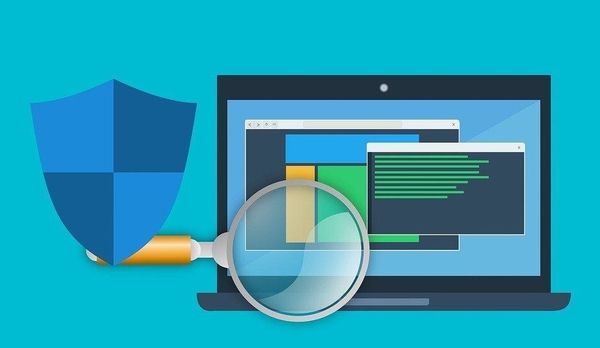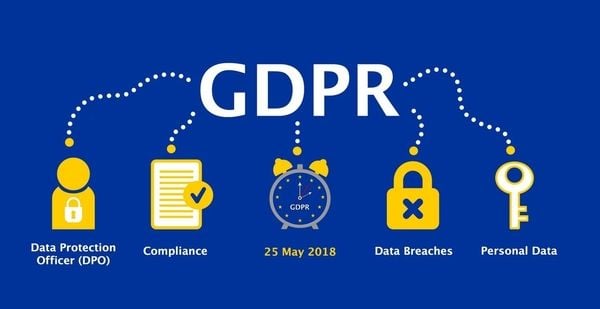
Top 7 Tips for Educational Institutions to Secure Their Data
May 6, 2020
Internet Shows Strength during Pandemic Usage Spikes
May 12, 2020In the past decade, cloud computing has gone from one of the various options to an indispensable part of the business landscape. With that being said, while adoption has significantly increased, few companies are embracing the potential of complex cloud computing solutions. Cloud computing is a concept full of unlocked potential for the majority of major adopters, and the building blocks of this potential lie in the data.
Data visualization is one key to unlocking this potential. By laying bare the data a company handles potential actions become clearer, easier to implement, and far more optimized. The result is a virtual infrastructure that breaks down barriers in strategy, communication, and security and allows for a more holistic pursuit of business goals.
What Is Data Visualization?
https://www.youtube.com/embed/t95-3Mwi328Data visualization, in its essence, is a way of giving customers or employees fast and easy access to copies of cloud data. Under a traditional model, a database copy would have to be created, entailing days of work from multiple teams, opening up potential loopholes for security concerns. Data visualization, on the other hand, provides you with a virtual copy of your database.
Picture this scenario: a company has a collection of customer data, but each department uses it for different purposes. Perhaps the financial department needs to access credit card information while the marketing department needs it for lead generation while yet another department needs the shipping information for sending and tracking deliveries.
Traditionally, each department would have a copy of the customer database which they use for their own purposes. Under data visualization, the database is stored centrally in a cloud computing system and a virtual copy can be accessed by any department individually for their own purposes.
Benefits of Data Visualization
To further explain how data visualization works, let’s take a look at some of the unique benefits it provides the user.
Faster Access
Because data visualization isn’t making physical copies of the cloud data a version of the database can be accessed much faster. No longer does each database copy need to be made by teams copying and migrating mountains of files, the information is ready and available whenever you need it.
Faster access means faster product development. The sooner your teams have access to your data the sooner they can implement it into their work, making for products more finely tuned towards your customer’s needs and interests and more engaging marketing.
Less Storage

As the information is visualized and virtual (i.e. not a physical copy) the information doesn’t need to be stored in the same way as traditional database copies. This also goes for infrastructure costs on the bandwidth needed for distributing database copies across LAN and the increased licensing costs from having multiple database management software on different devices.
All of this significantly drives down your storage costs and allows you to focus more of your resources on your products and customers.
Higher Security
In the traditional model scenario above, each department might hold a copy of the customer data, meaning each department is a potential window for attack. While traditional database management becomes more vulnerable to security breaches with each added user, cloud computing through data visualization allows all database security to focus on one central hub.
Virtual copies can also house masking tools that protect sensitive data from attackers.
Consistent Data
Storing individual copies of databases in separate departments can easily lead to a scenario in which customer data varies across the company. Maybe the marketing department finds some information on the customer through lead generation and adds a note to their database copy without informing the other departments: you suddenly have a data disparity.
With visualized cloud data, all additions are synced to the centralized database, making sure all your customer information is consistent across departments.
Easing Migration
Data visualization also helps in the migration of data from on-site repositories to cloud storage without adversely affecting applications. The virtual copy created by visualization is removed from the technical infrastructure, allowing for data transition that doesn’t interrupt access.
As a result, you could reexamine and explore different storage solutions without having to disrupt your services.
Analyzing Big Data
Big Data is another element of data management that is becoming a more intrinsic part of the business landscape by the month. As the volume and complexity of data skyrockets, the physical data copies become less and less practical or even possible.
Data visualization allows for the sorting and analyzing of structured and unstructured data that would be impossible in a physical copy scenario, allowing you to push your analytical faculties further and gain even more detailed insight into your business practices and customer trends.
Abiding by Data Protection Legislation

For companies operating in Europe, abiding by data protection legislation is highly important. 2018 marked the introduction of new and strictly monitored legislation across all EU states on how companies can handle customer data. Even the UK, no longer part of the EU, has instituted a General Data Protection Regulation (GDPR) that mimics the strict rules and severe penalties of the EU legislation.
Thankfully, data visualization through cloud computing is a very data protection-friendly way to handle customer data. Due to the centralized location, access issues are minimized and sensitive data is much more secure. Plus, as discussed above, there are in-built capacities to shield sensitive data when it is not relevant to the actions being performed.
Compatible with Remote Working
Writing this during the coronavirus lockdown, there is a lot of talk about remote working. Unlike physical database copies, cloud computing and database visualization are far more convenient for distributed working scenarios, meaning they could soon become the industry standard around the world.
Data visualization and cloud computing are certainly here to stay, so it’s safe to say that this list of benefits will only go on growing as the technology improves. I, for one, am excited to see what this new decade holds for cloud computing!
Main Photo Credit: ClicData

